(Page créée avec « For this reason, the solar collector is always mounted underneath the water storage tank, so that the cold water from the tank reaches the collector via a downhill water p... ») |
(Page créée avec « Frame construction ») |
||
| Ligne 40 : | Ligne 40 : | ||
}} | }} | ||
{{Tuto Step | {{Tuto Step | ||
| − | |Step_Title= | + | |Step_Title=Frame construction |
|Step_Content=Les mesures sont données à titre indicatif. Celles-ci sont à adapter en fonction de la taille de votre vitre. | |Step_Content=Les mesures sont données à titre indicatif. Celles-ci sont à adapter en fonction de la taille de votre vitre. | ||
Version du 24 janvier 2020 à 17:35
Introduction
Solar water heating systems use solar panels, called collectors.
This allows the heat from the sun to be collected and used to heat the water that is stored in a hot water tank.
There are two types of solar panels for water heating:
- vacuum tubes;
- flat collectors, which can be mounted on a wall or a roof.
Vacuum collectors are known to be more efficient because they suffer less leakage (thanks to the air vacuum in the tubes) than flat collectors. They are nevertheless more complicated to realize in low-tech.
We decided to test a plane-type sensor operating as a thermosiphon, i.e. without pumping system.Étape 1 - Thermosyphon Theory
Our system has no pumping system. The water circulation is only done thanks to a thermodynamic phenomenon called thermosiphon.
The principle of the thermosiphon system is that cold water has a higher density than hot water because it is more compact. It is therefore heavier and sinking. However, all systems tend towards a state of thermodynamic equilibrium. There is a movement called thermal convection to mix hot and cold water.
For this reason, the solar collector is always mounted underneath the water storage tank, so that the cold water from the tank reaches the collector via a downhill water pipe. When the water in the collector heats up, the hot water rises naturally, pushed up by the cold water and returns to the tank. The cycle tank -> water pipe -> collector heats the water until it reaches an equilibrium temperature. The consumer can then use the hot water from the top of the tank.
Étape 2 - Frame construction
Les mesures sont données à titre indicatif. Celles-ci sont à adapter en fonction de la taille de votre vitre.
- Sur la plaque de contreplaqué de 85x85cm, visser deux tasseaux de 85cm et deux tasseaux de 72cm, de façon à former un cadre. Choisir de tasseaux d’environ 6 cm d’épaisseur afin d’avoir un peu de profondeur.
- Vérifie que votre vitre s’intègre bien à l’intérieur du cadre.
- Ajouter des cales à l’intérieur du cadre de façon à pouvoir faire reposer la vitre dessus.
- Percer deux trous de diamètre 6mm sur un côté du cadre. Ceux-ci serviront à faire sortir les tuyaux de cuivre vers l’extérieur.
Étape 3 - Isolation
Afin de conserver un maximum de chaleur à l’intérieur du chauffe-eau, il est important que le cadre soit isolé au maximum. Il faut éviter les fuites d’air et les ponts thermiques. Nous avons donc isolé le fond du cadre.
· Découper du carton (ou tout autre isolant) de façon à l’ajuster parfaitement au fond du cadre.
· Recouvrir le carton de 2 couches de papier aluminium. Ceci a pour but de repartir la chaleur de façon bien homogène sur la surface en contact avec le tube de cuivre.
Étape 4 - Circuit d'eau
Dans ce système, il n’y a pas d’échangeur thermique comme dans un ballon d’eau chaude classique. L’eau du ballon passe directement dans le tuyau de cuivre et se chauffe à son contact. Nous allons donc former un circuit de manière à maximiser la surface d’échange entre le tuyau et l’eau.
- A l’aide d’un outil à cintrer, former un circuit avec le tuyau de cuivre.
Remarque : Il est important d’utiliser un outil approprié pour réaliser une belle courbure et ne pas faire de pli dans le tuyau. A ce diamètre, le tuyau a vite tendance à se plier et finira par casser.
- Assurez-vous de garder une bonne longueur rectiligne aux extrémités et faite les sortir par les 2 trous prévus à cet effet dans le cadre.
- Afin de maximiser la surface d’échange entre le circuit et le fond du cadre recouvert de papier aluminium, fixer le circuit à l’aide de vis et de crochet (voir photos).
Étape 5 - Pose de la vitre
- Déposer la vitre sur les cales du cadre. Assurer-vous qu’elle est bien ajustée et bien hermétique. Au besoin, combler les interstices avec du carton, du tissu ou du silicone pour isoler.
- Pour fixer la vitre au cadre, visser des tasseaux sur les bords.
Étape 6 - Liaison avec le réservoir d'eau
Pour le réservoir d’eau, nous avons choisi une poubelle de 30L avec un couvercle. Dans l’idéal, il faudrait isoler le réservoir pour conserver la chaleur.
- Couper les tuyaux de cuivre en sortie du cadre en laissant dépasser 2-3cm.
- Fixer un tuyau de silicone ou latex sur chacune des sorties à l’aide de colliers de serrage. Assurer-vous que la liaison est bien hermétique en soufflant dans les tuyaux silicone/latex lorsque le circuit est rempli d’eau, par exemple.
Remarque : Attention à ne pas trop serrer les colliers de serrage qui finiront par déchirer les tuyaux en silicone/latex.
- Plonger les deux tuyaux dans le réservoir.
Étape 7 - Fonctionnement
Published
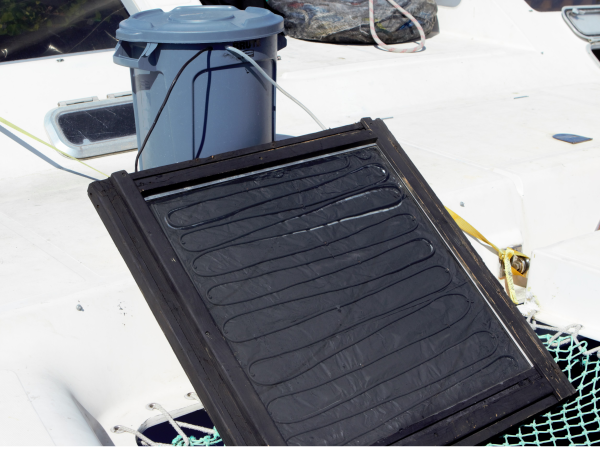
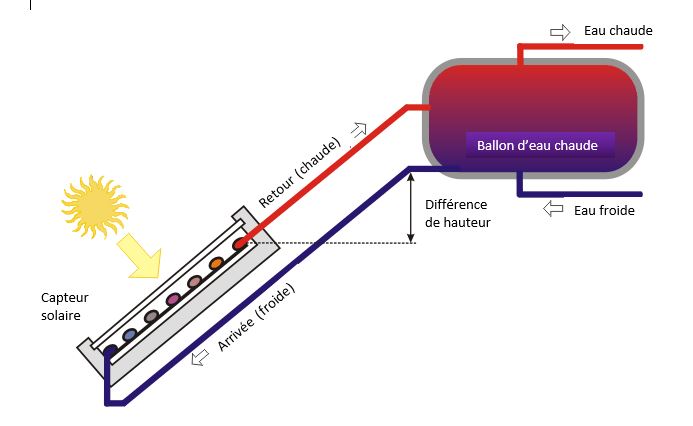
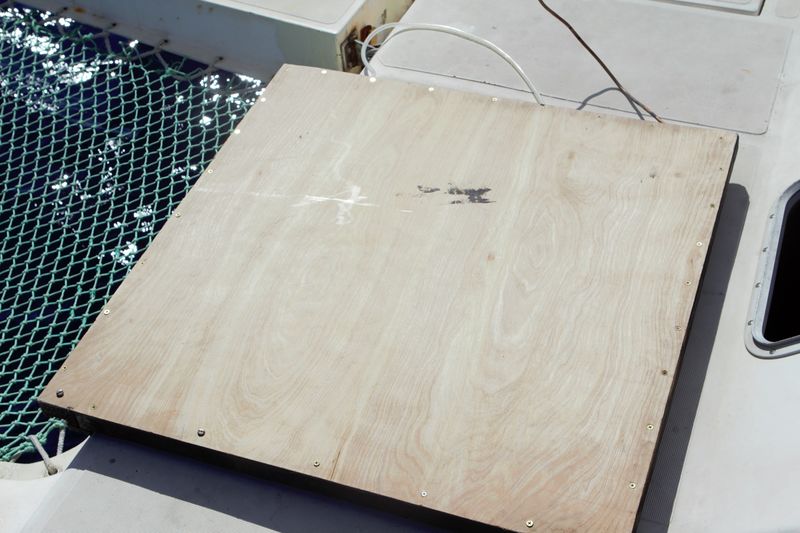
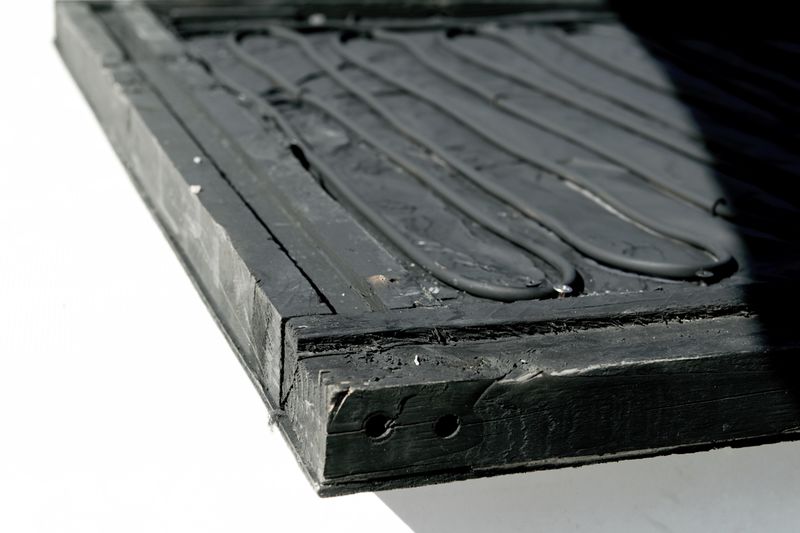
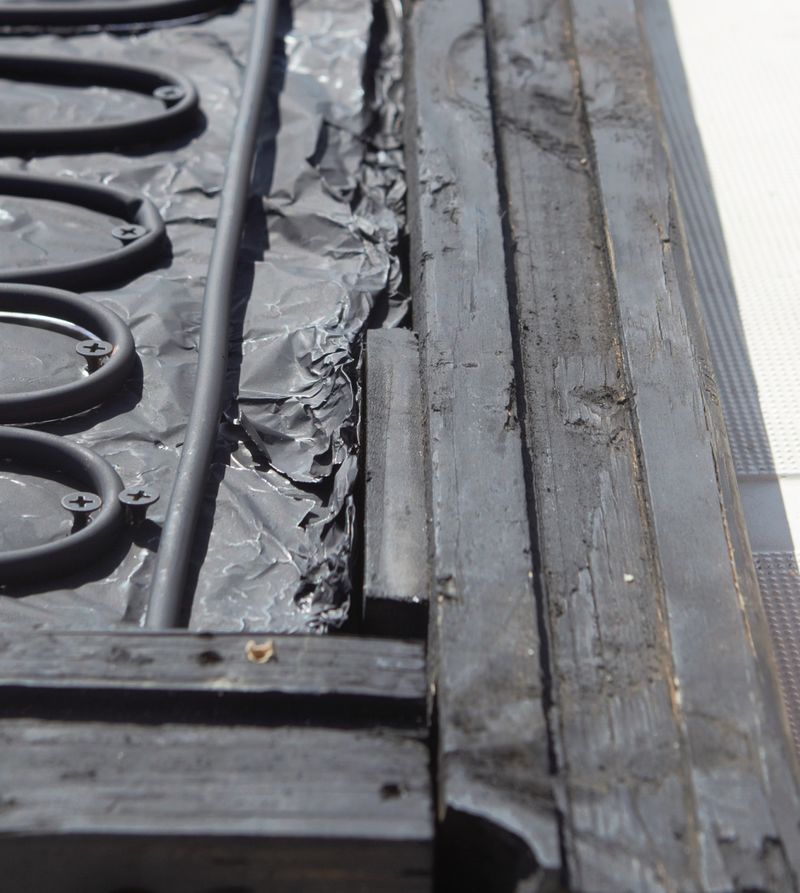
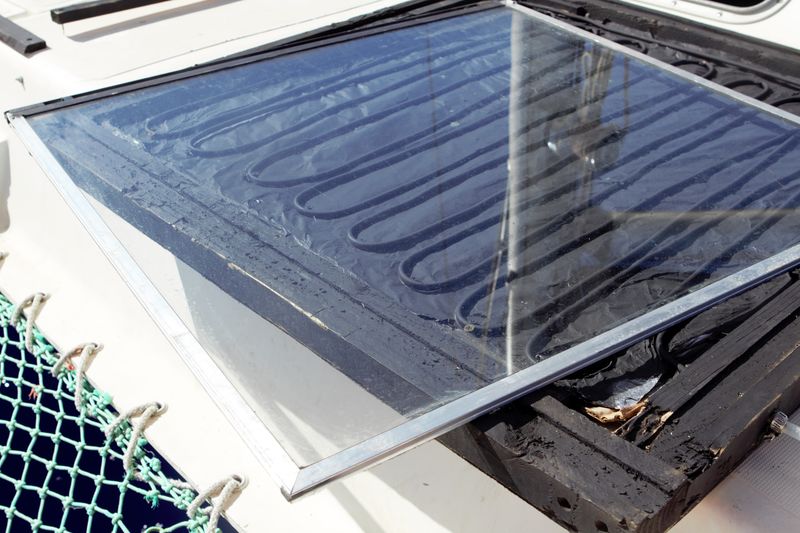
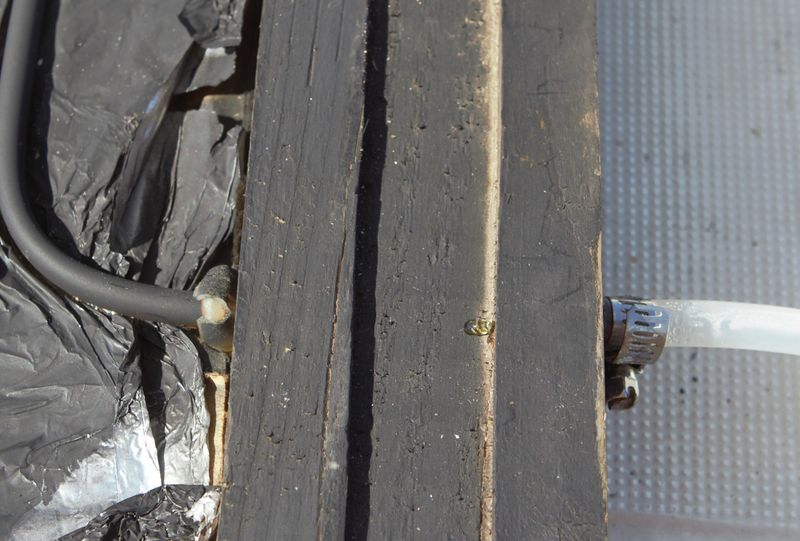
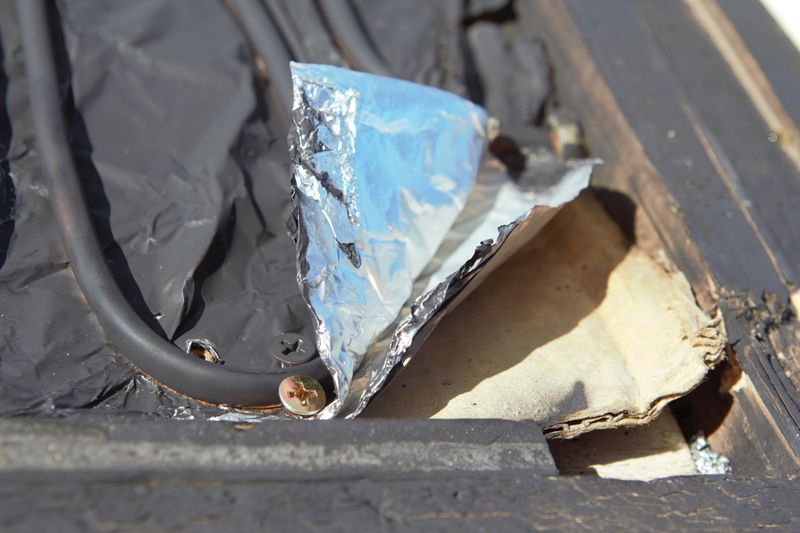
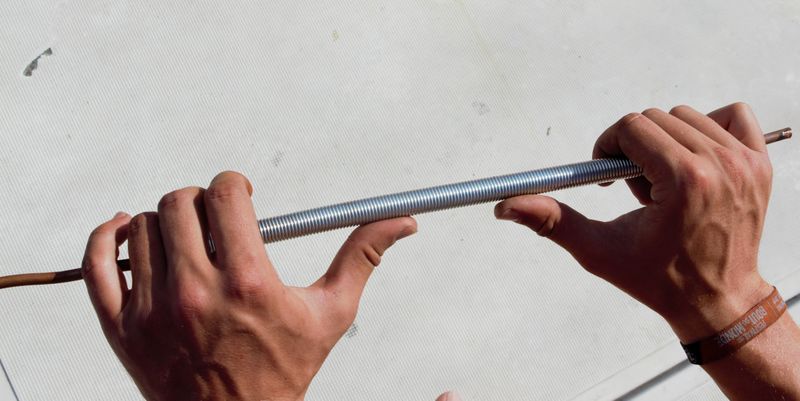
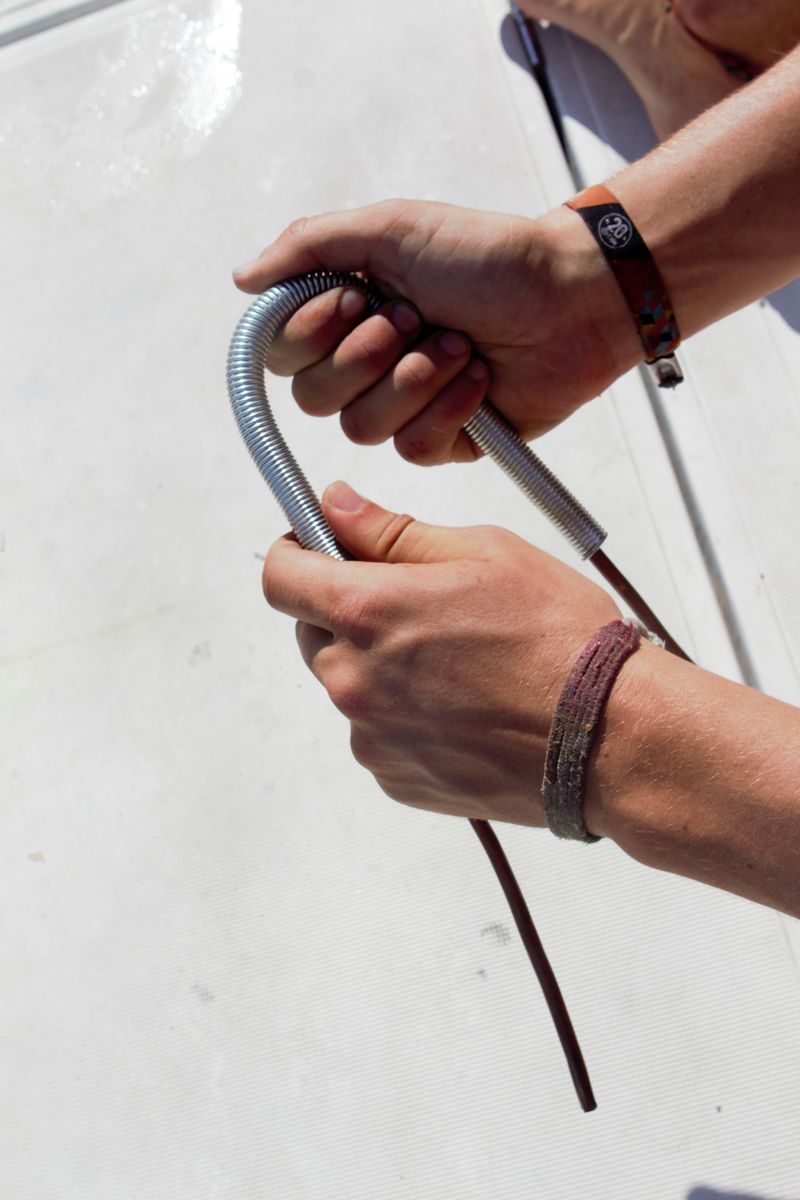
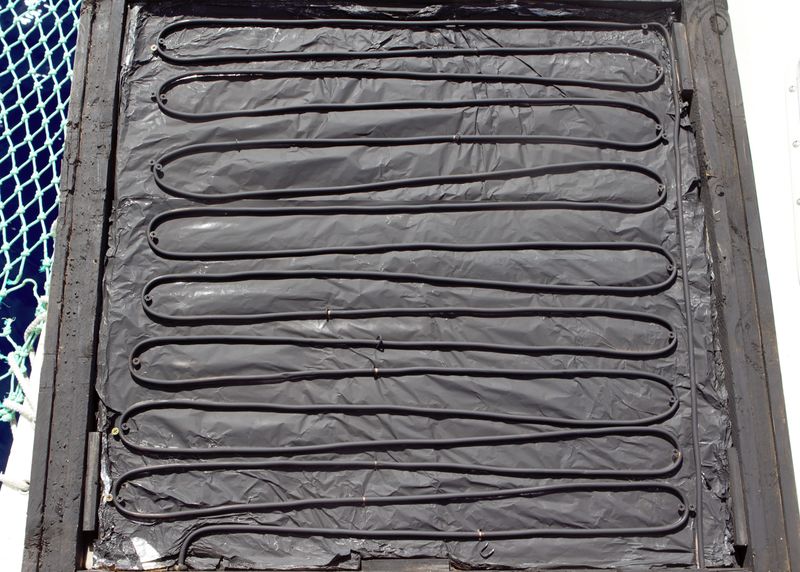
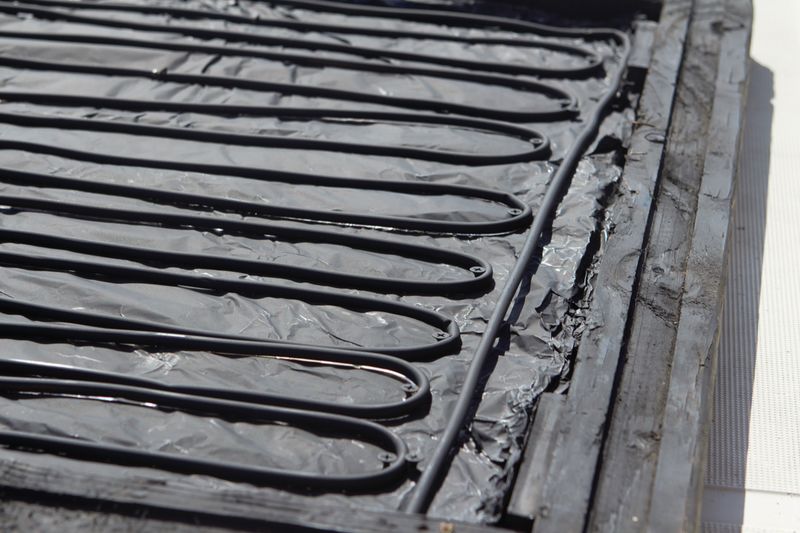
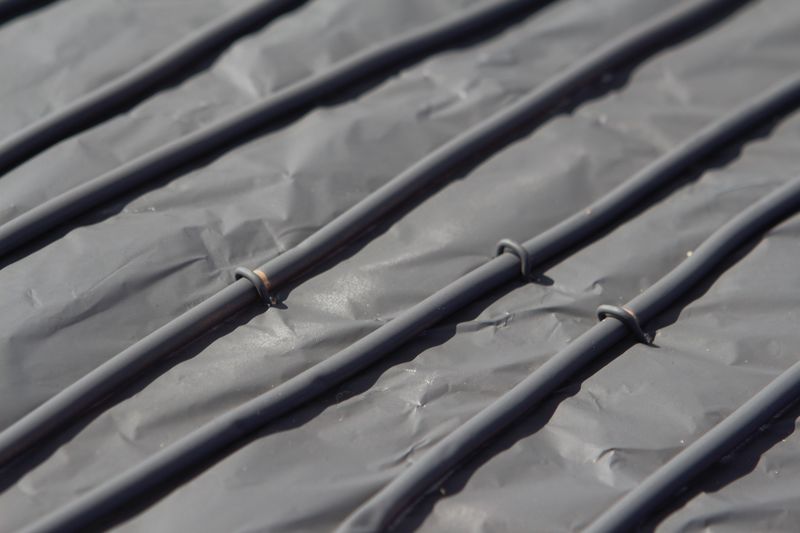
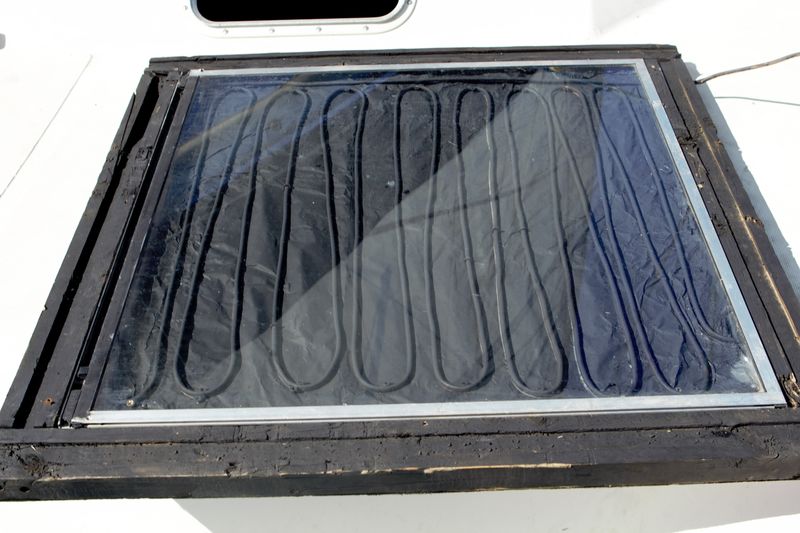
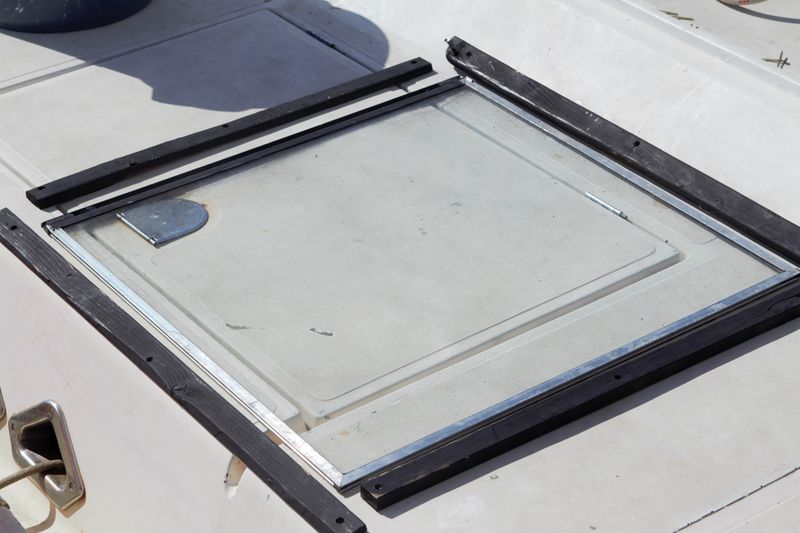
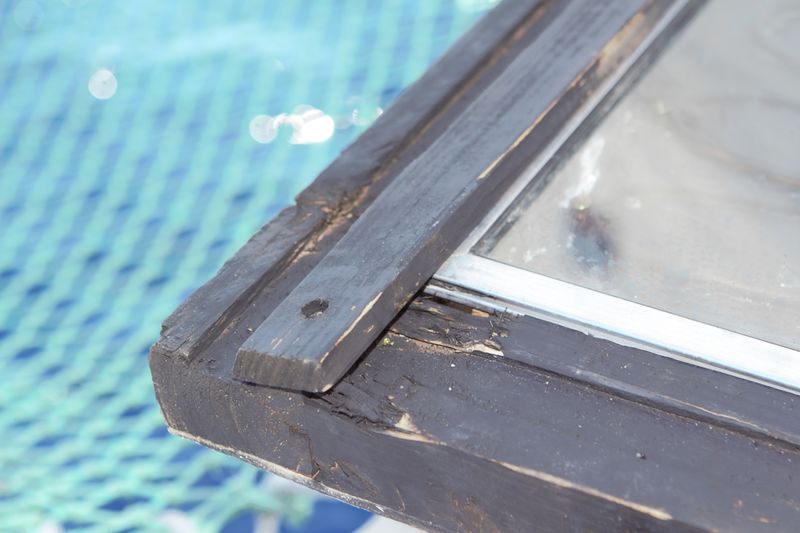
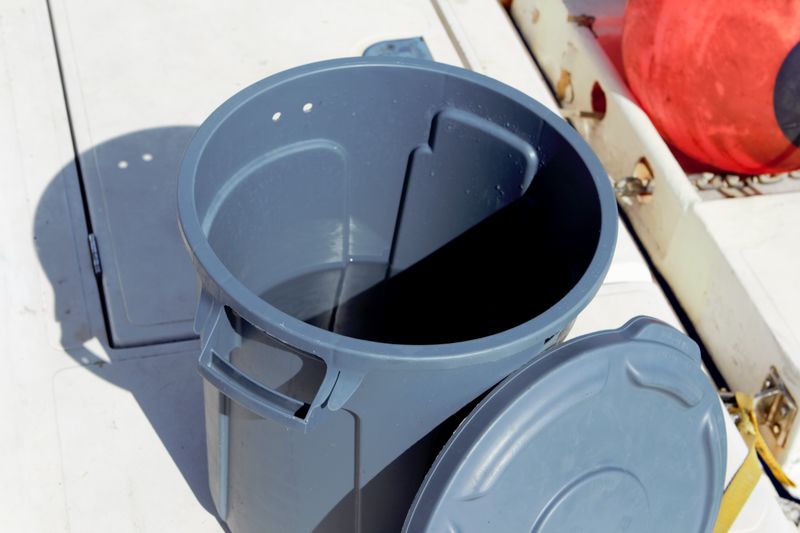
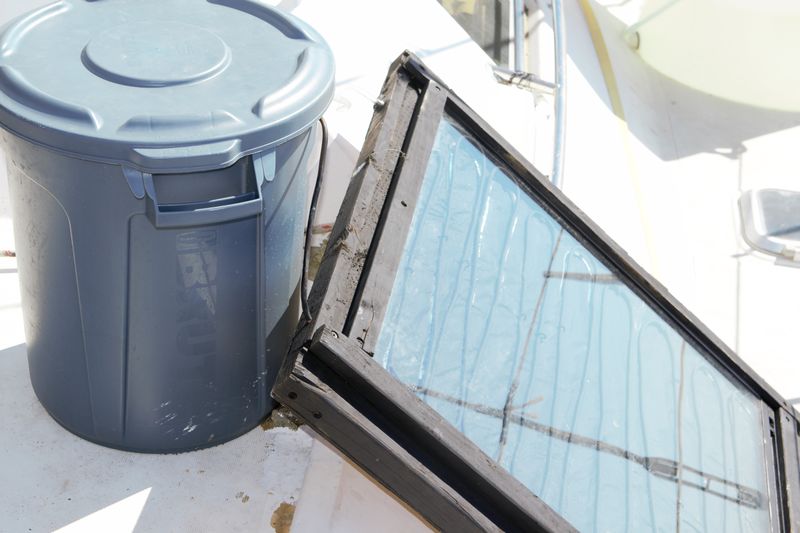
 Français
Français English
English Deutsch
Deutsch Español
Español Italiano
Italiano Português
Português